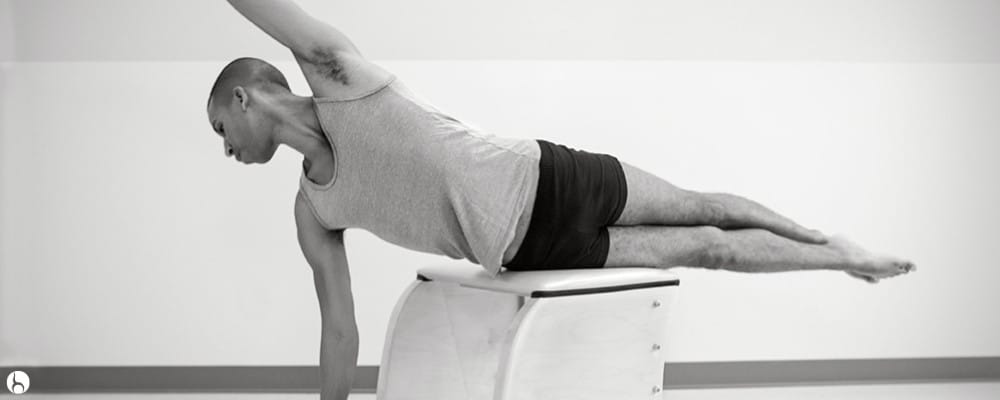Rev Up Your Routine: The Benefits of Cross-Training with Pilates

Whether you run, surf, roller skate, lift weights, or just love playing pickleball, Pilates is one of the best exercises for cross-training to supplement your favorite sports & activities. Read on to learn why!
Pilates teaches your body & brain how to move correctly with proper alignment and balanced muscle strength to do the activities you love most. After practicing Pilates consistently, your body develops muscle memory to perform activities better.
This is especially beneficial for when you’re performing an activity that doesn’t give you time to think of your movement patterns. For example, if your activity or sport requires getting into a squat position and you’re off balance every time, it will lead to injury. Pilates creates strength in the body that ensures proper alignment and control.
What is Cross-Training?
Before we dive into the benefits of adding Pilates to your cross-training, let’s dive into what cross-training is and why it’s so important.
Cross-training is a training method that involves engaging in a variety of different physical activities or exercises to improve overall fitness and performance. Cross-training typically involves participating in activities outside of one’s primary sport or exercise routine.
“Cross-training is a great way to condition different muscle groups, develop a new set of skills, and reduce the boredom that creeps in after months of the same exercise routines. Cross-training also allows you to vary the stress placed on specific muscles and even your cardiovascular system.” – The Benefits of Cross-Training, VeryWellFit
Cross-training can help individuals develop new skills and challenge their bodies in new ways, leading to improved overall fitness, strength, and endurance.
Why is Pilates Great for Cross-Training?
Because of its emphasis on core strength and stability, Pilates is an excellent cross-training activity for athletes and fitness enthusiasts of all kinds.
Here are some specific ways Pilates helps:
Improved Core Strength: The core muscles are essential for almost every physical activity, from running and jumping to lifting weights and playing sports. Pilates helps to strengthen these muscles, which can improve performance in other activities.
Increased Flexibility: Pilates emphasizes stretching muscles, which can improve overall flexibility and range of motion. This can be especially beneficial for athletes who need to be able to move freely and easily in their sport.
Better Balance and Stability: Pilates exercises are designed to improve balance and stability, which can be especially important for activities like skiing, snowboarding, and surfing, where balance is crucial.
Injury Prevention: Pilates can help prevent injuries by improving posture and alignment, strengthening muscles, and increasing flexibility. By addressing weaknesses and imbalances in the body, Pilates can help athletes avoid common injuries.
Mental Focus: Pilates requires a high level of concentration and body awareness, which can help athletes improve their mental focus and performance in other activities.
Pilates Builds Concentric & Eccentric Strength
Pilates is an effective way to develop both concentric and eccentric strength in the body, which can be beneficial for cross-training and other physical activities.
Concentric strength is the ability to generate force while muscles are shortening, as in lifting a weight or performing a push-up.
Eccentric strength is the ability to control force while muscles are lengthening, as in lowering a weight or descending stairs.
Pilates exercises often involve both concentric and eccentric muscle contractions, making it an ideal way to develop both types of strength. For example, exercises such as the Pilates Roll-Up or the Pilates Teaser involve both concentric and eccentric contractions of the abdominal muscles.
“In sport or in everyday life, we move in various patterns, lifting, lowering, and holding; from picking up your child (concentric), to lowering them down carefully in the crib (eccentric). It’s important to give attention to each to build our strongest most capable selves.” – Concentric vs. Eccentric, MindBodyGreen
By incorporating Pilates into your cross-training routine, you can develop both concentric and eccentric strength in your body, which can improve your performance in other physical activities and reduce the risk of injury.
How to Cross-Train with Pilates
Here’s how to add Pilates to your current fitness or sports routine:
1. Schedule Pilates into your schedule: To get the most benefit from Pilates, it’s important to make it a regular part of your cross-training routine. Consider scheduling at least two Pilates sessions per week, depending on your schedule and fitness goals.
*Check out Pilatesology’s Workout Plan feature that allows you to set parameters for your workouts and we’ll schedule them out for you! We’ll even send you notifications for your workout of the day. 📆
2. Choose Pilates classes that complement your other activities: When selecting Pilates classes, look for classes that focus on areas of your body that are important for your other activities.
*Pilatesology has classes specific to activities and sports. Here’s a filtered list for Sports & Dance! If you’re a teacher, here’s a filtered list of our workshops on teaching athletes & dancers.
3. Use Pilates as a recovery tool: Pilates can be a great tool for recovery after intense workouts. Consider using Pilates as a way to stretch and lengthen your muscles, improve your range of motion, and promote relaxation and recovery.
4. Join Pilatesology: Pilatesology is an online platform that offers a wide range of Pilates classes and workshops for people of all levels, whether you’re a beginner to the practice a seasoned practitioner or a Pilates teacher. Your first 14 days are free. ✨
Resources
Roig M, O’Brien K, Kirk G, et al. The effects of eccentric versus concentric resistance training on muscle strength and mass in healthy adults: a systematic review with meta-analysis. Br J Sports Med. 2009;43(8):556-568. doi:10.1136/bjsm.2008.051417: https://pubmed.ncbi.nlm.nih.gov/18981046/
Tags:

From the Community